This evening, Stephen Ledrew interviewed candidates, Michelle Wasylyshen, the Sussex Group PR consultant who was engaged by the Toronto Humane Society to pull together a Save the THS slate of candidates for the upcoming board election and who is, herself, running, and Dr. Johanna Booth, a veterinarian running for the board as part of the Faces of Change slate.
As with all things CP24, the pace of the interview was urgent with questions and answers coming thick and fast.
There were some easy initial questions about the special general meeting to be held on May 30 to elect the new board. This is an important meeting because the old board was requested to resign as a result of the findings of an investigation of the shelter by the OSPCA that began last November.
 Stephen asked who was eligible to attend the meeting to elect the new board. Michelle was first out of the starting gate, stating, “everyone”. Well, in fact, it’s only people who had memberships prior to the end of last November and who fall within certain other criteria.
Stephen asked who was eligible to attend the meeting to elect the new board. Michelle was first out of the starting gate, stating, “everyone”. Well, in fact, it’s only people who had memberships prior to the end of last November and who fall within certain other criteria.
Stephen asked what the issues were, and Michelle piped up: “lack of governance”, so he probed further: “Like what, Michelle?”
She cited the fact that the previous executive director (Tim Trow) had also been the board chair then, glancing at her sheaf of talking points, slid directly into her script about a recent OSPCA photo-op (Frank Klees and Peter Kormos are challenging the mandate of the OSPCA and Michelle wangled a pic of herself with the politicos). Her governance discussion segued into a statement that a change to the OSPCA would benefit everyone, hardly something her slate had thought of before the Newmarket debacle presented a grandstanding opportunity this week.
 Johanna pointed out some specific issues with the Toronto Humane Society, having been there for eight months as a veterinarian. Governance was totally lacking, she said, with no one willing to help the hundreds of volunteers and staff begging for assistance with the animals, and this prompted them to pursue change for the THS.
Johanna pointed out some specific issues with the Toronto Humane Society, having been there for eight months as a veterinarian. Governance was totally lacking, she said, with no one willing to help the hundreds of volunteers and staff begging for assistance with the animals, and this prompted them to pursue change for the THS.
At this point, Stephen opined that both slates seemed to want reform and asked whether the real issue was the euthanasia mandate.
Johanna agreed that the euthanasia policy was a key issue for the suffering, dying animals since, under the current board’s watch, the THS had refused to euthanize (Ed. note.: statistics were kept artificially low by allowing animals to die in their cages rather than through proven life-saving programs which had, in fact, been cancelled).
Michelle interrupted, saying that her slate would use euthanasia as a last resort not a first resort and that was the difference between the two slates. (This blogger’s opinion is that her statement is a total fabrication.) Curiously, she also advised that “there are people on your slate (Faces of Change) who are no-kill, and that is just non-sustainable”. This might not go over well with voting members and donors who want their dollars directed to programs to shelter, rehabilitate and rehome animals.
Johanna corrected her, saying that euthanasia was, in fact, a last resort for the Faces of Change. Michelle interrupted her: “Some say it isn’t…” but then Stephen cut her off.
You can look at the Faces of Change candidates and their plans here, by the way.
Johanna added that euthanasia is only appropriate if there is an untreatable medical condition and the animal is suffering, or if there is a behavioural issue that cannot be rehabilitated. She and Dr. Karen Nasir, another Faces of Change veterinarian in the running, concur on this, and their team members have voiced their agreement.
Michelle tried to interrupt again, but Stephen cut her off and opined that both Michelle and Johanna were saying the same thing about euthanasia, so why the opposition?
According to Michelle, it was because of “so much politics in the past” but stated that her slate has no ties to the past.
Stephen was incredulous: “No one?”
“Well, one board member, but that was in the 90s.”
There was a segue to street interviews so that Stephen didn’t have to ask some really tough questions, but you can check out the facts at the blog links below.
“We’d like the politics to be set aside and a focus put on the animals,” said the street interviewees.
Then some callers weighed in.
The first caller pointed out that Johanna had done some fascinating work during her career and asked why she was running for the board.
Johanna responded that she had been working with animal rescues and spay/neuter and decided to go ahead and get a veterinary degree. She went to work afterwards volunteering to spay/neuter street animals in Panama. She’d worked for eight months at THS and had tried to improve conditions for the animals there. She felt that she could bring the needed change as a board candidate.
Stephen turned to Michelle, pointing out that THS had worked with the Sussex Group, the firm which employs her. Michelle said that, yes, Sussex Group works with organizations in “crisis situations” and is recognized nationwide. That’s all she said, not actually getting to the question of her own motivation for running for the board.
Another caller questioned the tie between her Save The THS slate to the old board, since president Bob Hambley and THS lawyer Pell Capone had attended slate meetings.
Michelle hedged, and Stephen prompted her to “answer the question, Michelle.”
“They attended one information session”, she said, then veered off again about “other people associated with the OSPCA” before Stephen cut her off.
“There’s so much misinformation out there,” Michelle said. “We’re 100% separate from the old board. I’ve spoken to Hambley once.” Hopefully, the members have already connected the dots.
Explain, Michelle, the letter from Bob Hambley to members, allying himself and old-timer Margaret Ann Johnson with your slate of 13. 13+2. 15 board positions. Does your slate now embrace them or are you still playing good cop/bad cop?
(Elsewhere, Michelle has commented that no reasonable person would expect current board president Bob [Hambley] to endorse a slate that has no room for him on it should they be elected.)
Johanna brought the discussion back by pointing out that the Faces of Change slate is backed by a large cadre of volunteers who have walked the walk, they know the staff, they have a plan, and they are on the ground and grassroots.
Stephen suggested that, from a member’s point of view, it’s nice to be able to choose 15 individual candidates rather than feel forced to vote for an entire slate.
Johanna agreed that if there hadn’t been a slate structure, “you wouldn’t have had the politics.”
Michelle chimed in: “Then who would you can from your team? We have fundraising, legal, and so much governance…”
And here I was, thinking it was about the animals, Michelle.
For more on the THS election, visit One Bark at a Time, and read this story about the THS’ decision to close the kitten nursery right at the beginning of kitten season, a move by the current board and management that could cost many innocent lives. Update: Under some pressure, Hambley has backtracked and now states that the kitten program will be a decision for the new board.
The following analyses from the animal welfare blogosphere are also required reading for anyone with a vote in this important election, courtesy of Social Mange and Tailspin:
THS election
Shenanigans
Ledrew, kittens and PIPEDA
Vote for compassion and honesty






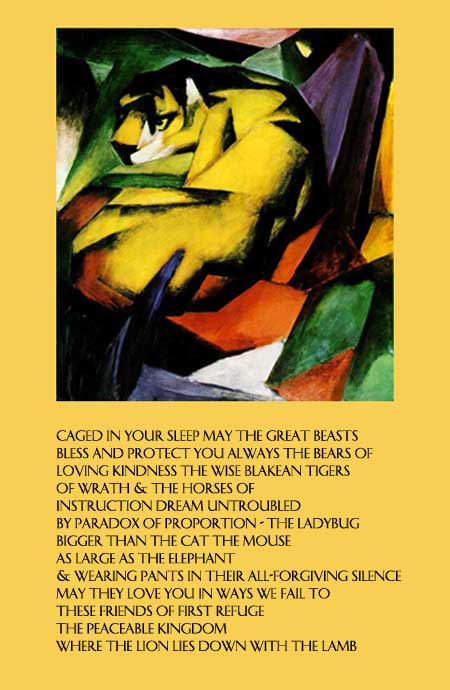
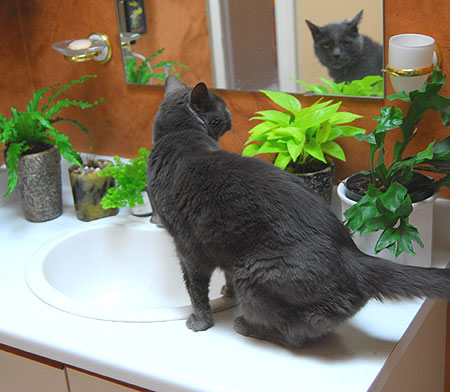
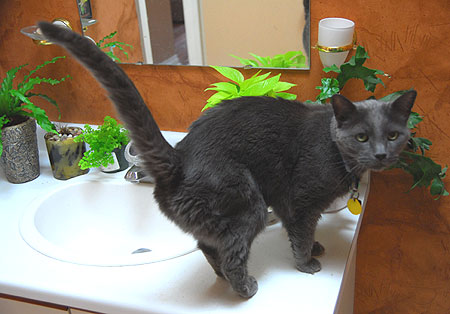
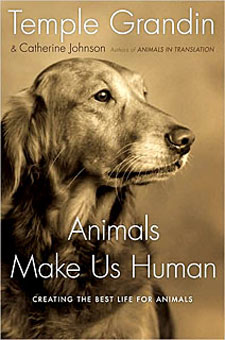 Temple Grandin’s
Temple Grandin’s 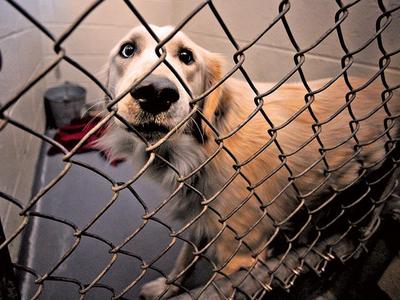
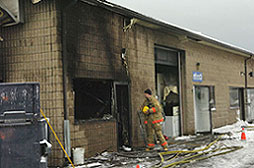 The overcrowded shelter was in a run-down industrial area of Oshawa, a satellite of Toronto that is facing an evisceration of the automotive sector while Smilin’ Jim Flaherty contemplates his navel lint.
The overcrowded shelter was in a run-down industrial area of Oshawa, a satellite of Toronto that is facing an evisceration of the automotive sector while Smilin’ Jim Flaherty contemplates his navel lint. Earlier, we blogged about Matthew Scully’s important book,
Earlier, we blogged about Matthew Scully’s important book,  Kim Honey, a Toronto Star food scribbler, managed to generate readership for her employer this past week by regaling us with her dispatch of a little bunny at a foodie survival get-together.
Kim Honey, a Toronto Star food scribbler, managed to generate readership for her employer this past week by regaling us with her dispatch of a little bunny at a foodie survival get-together.